English | Dutch |
|
| We’ll be back soon | |
Sentani (Indonesia) to Kuala Lumpur (Malaysia), October 2012
|
|
| |
|
So far, our visit to Indonesian Papua was already a big success. We went to fabulous Wasur National Park in the south, saw four species of Birds of Paradise in Nimbokrang and relaxed a bit on the tropical island of Biak. A couple of years ago we also visited the spectacular Arfak Mountains near Manokwari, so we can say that we have a good impression of this remote part of the Indonesian Archipelago. We also thought thoroughly about visiting also the Baliem Valley, the single most popular tourist destination in Papua. This remote valley is especially famous for their traditional ways of life of the local population and of course the penis gourds. We also heard some negative stories about the area. Some people describe the area as a tourist trap where traditions and authenticity have been replaced by over active commercial locals in search of tourist dollars. And that is the reason why we were not sure about going to the valley, because we didn’t want to have a bad experience at the end of our Papua trip. |
|
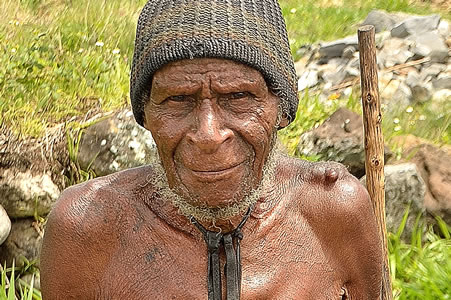 |
|
A traditional man in the Baliem Valley |
|
But we decided to go and we didn’t regret it. We were so close to the valley and for that reason we said that we should give the area a chance. The flights to and from Wamena aren’t that expensive, so there is no real financial reason to skip the valley if you are already in Jayapura, the main city in Papua. We bought two return tickets to Wamena and gave ourselves a week to ‘enjoy’ the area. How bad can it be? The answer is that it wasn’t bad at all. It is a beautiful area, with nice and lovely people and we didn’t see many other foreign travellers. We heard from locals that the month of August is by far the busiest month, because August is the month in where the Baliem Festival is organised, a festival for tourists. This is the time when the tour groups arrive and when shows, dances and pig feasts can be visited. This is the most picturesque time of the year to visit, because many local ‘actors’ who are present at the festival, still wear the traditional cloths. If you go outside this tourist season, the Baliem Valley is a quiet place with great hiking opportunities. We are glad that we decided to go (see also our photo impression about the Baliem Valley). On October 11th we flew back to the ‘civilised’ world again, called Java. We arrived in chaotic Jakarta but decided to spend the night in Bogor, a city close to Jakarta. Bogor is a small and traditional town which can be used as a base for city trips to Jakarta (one hour by train). We like Bogor more than Jakarta and are always happy to see Tom again, the owner of Tom’s guesthouse, located in an old traditional Dutch villa. The place is basic but clean, and is a very atmospheric place to stay for backpackers. Tom is a very nice guy, speaks English and can be contacted on his mobile phone: +62 (0) 8777 046 7818. After a couple of days in Bogor, we took the bus to Bandung, once called the Paris of the East. But don’t expect anything from this comparison. Bandung is a chaotic town with huge air pollution. The sights in the city are not interesting, making it a place which can easily be skipped. After two days we were happy to take the bus again, this time to Cirebon, a fishing town on the north coast of Java. | |
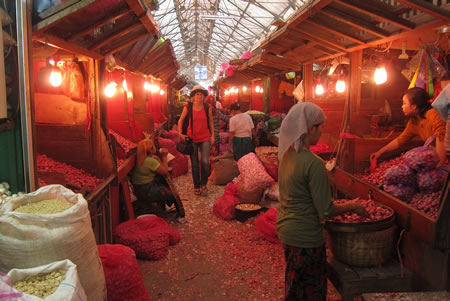 |
|
An market with a lot of atmosphere in Surabaya |
|
| Cirebon is a nice little town with friendly people. Not many foreign travellers make a stop over in this town on their way to the eastern part of Java, so foreigners are still relatively rare here. The most important tourist site is the ‘kraton’, the palace of the sultan, which isn’t really special. Cirebon is a stop on the busy Jakarta-Surabaya railway line, and has for this reason good connections with other towns on the north coast of Java. Our next stop was Semarang, the most Chinese city in Indonesia. This city is much more chaotic than Cirebon, but it has definitely more ‘colonial’ atmosphere. Most of the buildings in the old part of town are crumbling nowadays, but you still get a good feeling of the former grandeur of this city. We stayed here for two days and eventually made the trip to our last destination in Indonesia during this visit: Surabaya. Surabaya surprised us in a very positive way. Indeed, the city is crowded and busy, but it has still some very charming corners. Especially the Chinese part of town and the nearby Arabic quarter are well worth a visit. The market in this area is great, and in our opinion one of the nicest markets you can visit in Java. This makes Surabaya a great alternative as entry or exit point for Indonesia. There are connections with many cities in the area like Kuala Lumpur and Bangkok. Surabaya is also good located if you want to visit other highlights in Java, like the Bromo Volcano, or the traditional cities Solo and Yogyakarta.
From Surabaya we flew to Kuala Lumpur. We picked up our new passports here and made the final preparations for the visit of Edwin’s parents to Asia. We pick them up in Kuala Lumpur and will take them after a couple of days via Surabaya to the Moluccas in Indonesia. It is one of our favourite areas in Indonesia and we hope that Edwin’s parents will like the Moluccas as much as we do. So we left Indonesia a couple of days ago, but we will be back soon. | |
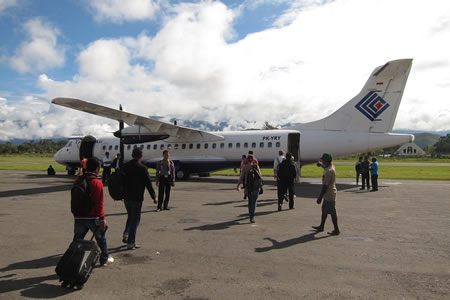 |
|
With Trigana Air back from Wamena to Sentani |
|
 |
|
A bird's view on beautiful Lake Sentani |
|
 |
|
Street view of Semarang |
|
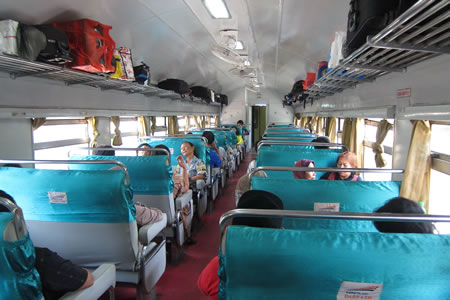 |
|
Train from Semarang to Surabaya |
|
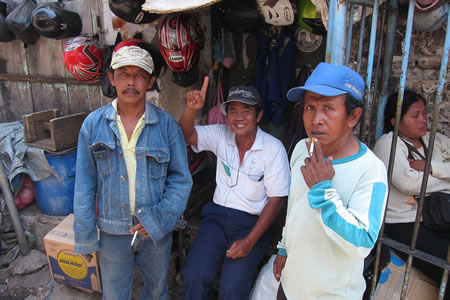 |
|
Locals in Surabaya |
|
| <Previous weblog> | |